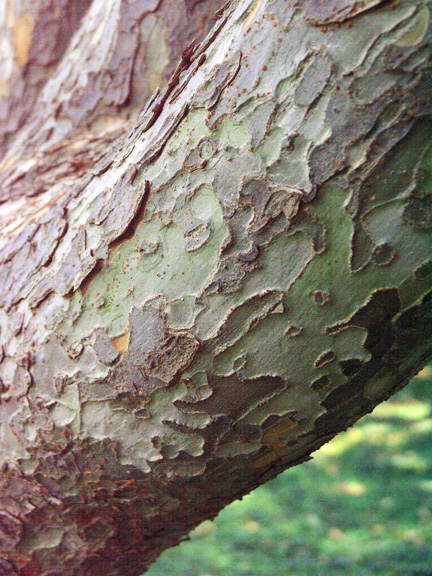| General Description | The Lacebark elm trees has a unique bark that looks good at anytime of year. Pruning will enhance form and promote strong character. |
| ID Characteristic | The Lacebark Elm has a unique smooth, mottled brown bark which sheds in thin flakes, showing the orange to red-brown inner bark making the tree easy to identify at anytime of year. Easy to identify amongst the Elms because of its late summer–early autumn seed set. |
| Shape | Upright to rounded canopy that in some forms may be slightly penulous. |
| Landscape | The Lacebark Elm can be used in urban landscapes mainly due to its pollution tolerance, often used as an accent specimen due to its exfoliating bark.
|
| Propagation | Fresh seed germinates quite easily. However, if it left to dry germination is a little more complicated, often requiring 30 days at 5°C stratification. Cuttings collected in May/June and rooted under mist are also successful. |
| Cultivation | A tree tolerant of a variety of soil conditions and locations. Easily transplanted and tolerant of urban conditions. |
| Pests | The Lacebark Elm tree has considerable resistance to the elm leaf beetle and Japanese horned beetle and is also unusually resistant to dutch elm disease.
|
| Notable Specimens | The Niagara Parks Botanical Gardens, Niagara Falls, Ontario. |
| Bark/Stem Description | Lacebark Elm has a smooth, mottled brown bark. That sheds in thin flakes, showing the orange to red-brown inner bark; very attractive. |
| Flower/Leaf Bud Description | The buds of Lacebark Elm tree are the smallest of any elm. Buds on the stem are alternate, brown in colour and are about 25–32 mm long.
|
| Leaf Description | The leaves of the Lacebark Elm are uniquely rounded at the bottom. 1.8–6.4 cm long, alternate, simple elliptic to obovate in shape; yellow to red-purple in autumn. |
| Flower Description | The flowers are inconspicuous and appearing in axillary clusters during August–September; the flowers often go unnoticed because they are hidden by foliage. |
| Fruit Description | The fruit ripens in September–October, and are about 1.84 cm long samara that is obovate to elliptic in shape.
|
| Colour Description | Leaves are dark green in the summer, turning yellow to red-purple in the autumn. Bark is brown to grey with a mottled khaki colouring. |
| Texture Description | Medium to fine leaf texture. |
